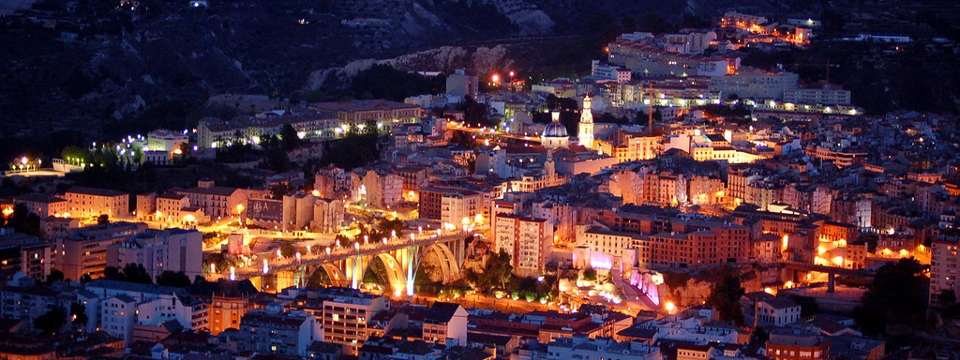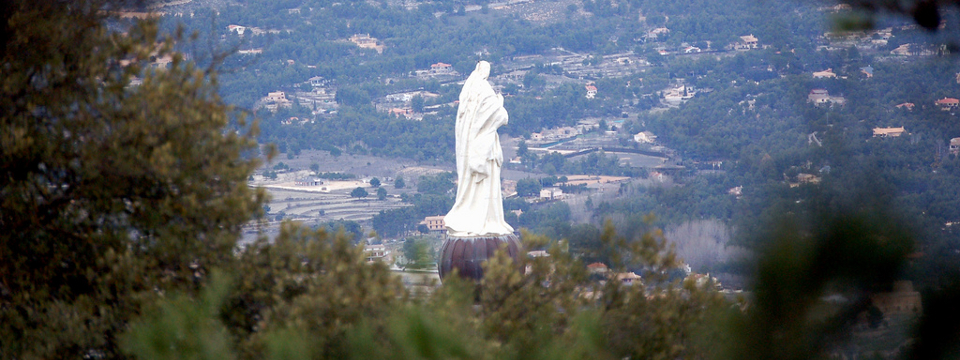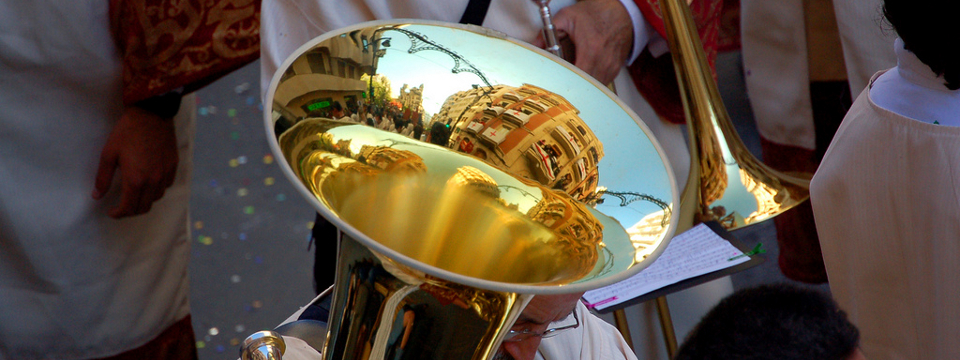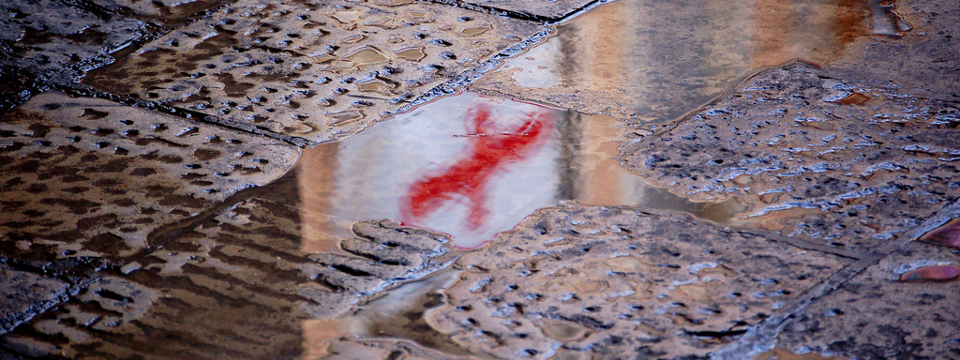History
The earliest known evidence of human presence in the municipality of Alcoy, dating back to the Middle Paleolithic, 60,000 years ago. Neanderthal hunters moved into caves and shelters in the area. The site of The Salt is one of the best documented, thanks to the archaeological work of recent decades. The data obtained from the study of instruments carved from flint, the remains of wildlife (deer, goats, horses) and other remnants that show the presence of humans, suggest that this was a temporary camp revisited by these groups for thousands of years.
At the end of the Quaternary glaciations, which in the Mediterranean regions did not have the rigor of other more northerly latitudes, coincident with the Mesolithic period begins the introduction of primitive agriculture. In the Mediterranean area tecnocomplejos recognized two cultures, the complex geometric microlaminar and present in his final moments in the shelter of the Falguera.
In the vicinity of Sarga there are some shelters with prehistoric paintings in which are scenes of hunting, gathering, and figurative motifs called Levantine art (10000-6500 years ago) and schematic of the known of Schematic Art and Art Macroesquemático local variant completing the pictorial sequence peninsular Mediterranean post-Paleolithic (10,000 to 1500 BC). Other remains of Neolithic and Metal Age, attest to the prehistoric occupation of the municipality.
By the 3000-2500 a. C. develops late neolithic period. At this time, the caves are no longer the main occupation sites to give way to widespread habitat in the plains. The caves have shorter occupations and are used in many cases such as pens and other collective burial sites during the third millennium. These include those of Les llometes and the Cave of the pastor.
Regarding the occupation of the territory, establishing fortified settlements on the tops of the mountains, as high Serella Mola, Most of the Corral, the Over Menente, and Puig, who developed economies grain evidenced by the abundance of teeth flint and hand mills.
In the early first millennium, during the Period of late Bronze Age, came to this land various foreign influences, such as polls fields first and then the Mediterranean cultures, which produced changes in the native substrate, such as incineration of corpses the appearance of iron, ceramic around the diversification of the population that would lead to the development of Iberian culture. Iberian culture is the result of social development of communities in the bronze final, which act on other influences of Mediterranean cultures, the Phoenicians, and Greeks who came to these lands from commercial enclaves near the coast. As a result of these developments, several villages were formed which were the Iberian culture, developed between the ages VI-I a. C.
In this regional context, the ancient Iberian settlements were the Contestania region, within the existing districts of the Hoya de Alcoy and Cocentaina County. The valuable archeological findings Iberian preserved in the Archaeological Museum of Alcoy, prove its importance. The Iberians settled mainly in fortified settlements above, overlooking the surrounding landscape were mainly farmland. Among these villages should be mentioned: the Puig and Serreta.
During Roman times, these districts Coach Terminal was a space on the outskirts of major cities, which were located on the coast, as Dianium (Denia) or Lucentum (Alicante), or close to main communication routes, such as: Saetabis (Xativa). This territory is characterized by some character sites Coach Terminal, the so-called broad generalizations, which were mainly between the second and fourth centuries AD C.These villas located in l’Horta notably La Major of which are known to cemetery.Burials in this cemetery appeared in tegulae in which, next to the buried body is deposited ceramics and other objects of greater value as personal ornaments or a delicate glass vase. Testing the perception of these counties as rural and sparsely settled by the Romans, may be the spirits of the forest representations as bronze l’Apps of Silenus. The presence of traces of the Roman, although few were found in small villages called hamlets, whose place names still exist today (Uixola, Benissa, Polop, Barxell, etc.), Which depended, among the centuries-X and XIII of fortification in Castellar.
The birth of the Christian town dates back to 1256. Born with the construction of a castle (Alcazar) on the strategic enclave Serpis source of the river at the confluence of streams of Benissa and Molinar, part of the city now known as Algezares.
It was the result of the desire to colonize and secure the southern border of the Kingdom of Valencia, after the Christian Reconquista led to termination by Jaime I of Aragon. Initially, in 1238, Jaime I submit peacefully, through treaties, the Arab territories of Valencia, her garden and those “beyond Júcar (ALL in Xúquer month), among which were the lands of the Valles de Alcoy and Valleys of Alcalá, Zeta and Travadell.
However, not all Arab gentlemen agreed with this submission and 1248-1258 to start a first revolt of Al-Azraq, sir, “the Vall d’Alcala” against the rule of James I. There are indications of a first loss of this leader against the Christian army at the battle of “Penya Cadiella”, probably in the area of the Sierra de Benicadell, the current boundary of the provinces of Alicante and Valencia, about 20 km Alcoy. Perhaps the destruction of “El Castellar, castle or Moorish fortress whose remains were found damaged on the western edge of the city of Alcoy they occur also in these dates.
A first result of these riots, King James I ordered the construction of a series of castles Christians in the southern border then the Kingdom of Valencia, situated in strategic locations, giving rise to new populations, which were banned “the morerías “Alcoy, Sax …
The riots last Arab leader Al-Azraq, in 1276, were finally submitted (dying itself Al-Azraq when he was besieging Alcoy) and determined the final settlement of Christian power over the province of Alicante.
In 1291 King James II of Aragon donated the villa to Admiral Roger de Lauria, not returning the town to the power of the kings until 1430. This year, following the uprising of the then Lord of Alcoy, Federico de Aragón, Conde de Luna, the village became a real power, and from 1447 the king Alfonso the Magnanimous confirmed the privilege of representation in the Cortes of Valencia.
During the War of Succession (1705-1707) the Alcoy defended the cause of the Archduke Charles, for which the town was besieged and suffered attacks, the abolition of local privileges, fines, etc., Which dwindled population and wealth. Years later, King Philip V himself was awarded the abolition of taxes and privileges granted to the Royal Textile Factory of Alcoy.
The city was involved in an important chapter in its history during the Revolution Canton in 1873. The Republican mayor, Agustí Albors, nicknamed Pellet, ordered to fire on the factory workers were concentrated in the municipality during a strike. Here, enraged, stormed the building, killing the mayor and his body mutilated. Alcoy declared independence and was ruled by a Public Health Committee from 9 to 13 July, until the arrival of federal troops. This episode is known as the Revolution of oil (Revolució of Petroli).
During the Spanish Civil War the city became a stronghold of anarcho-syndicalism, hosting of the AIT.








